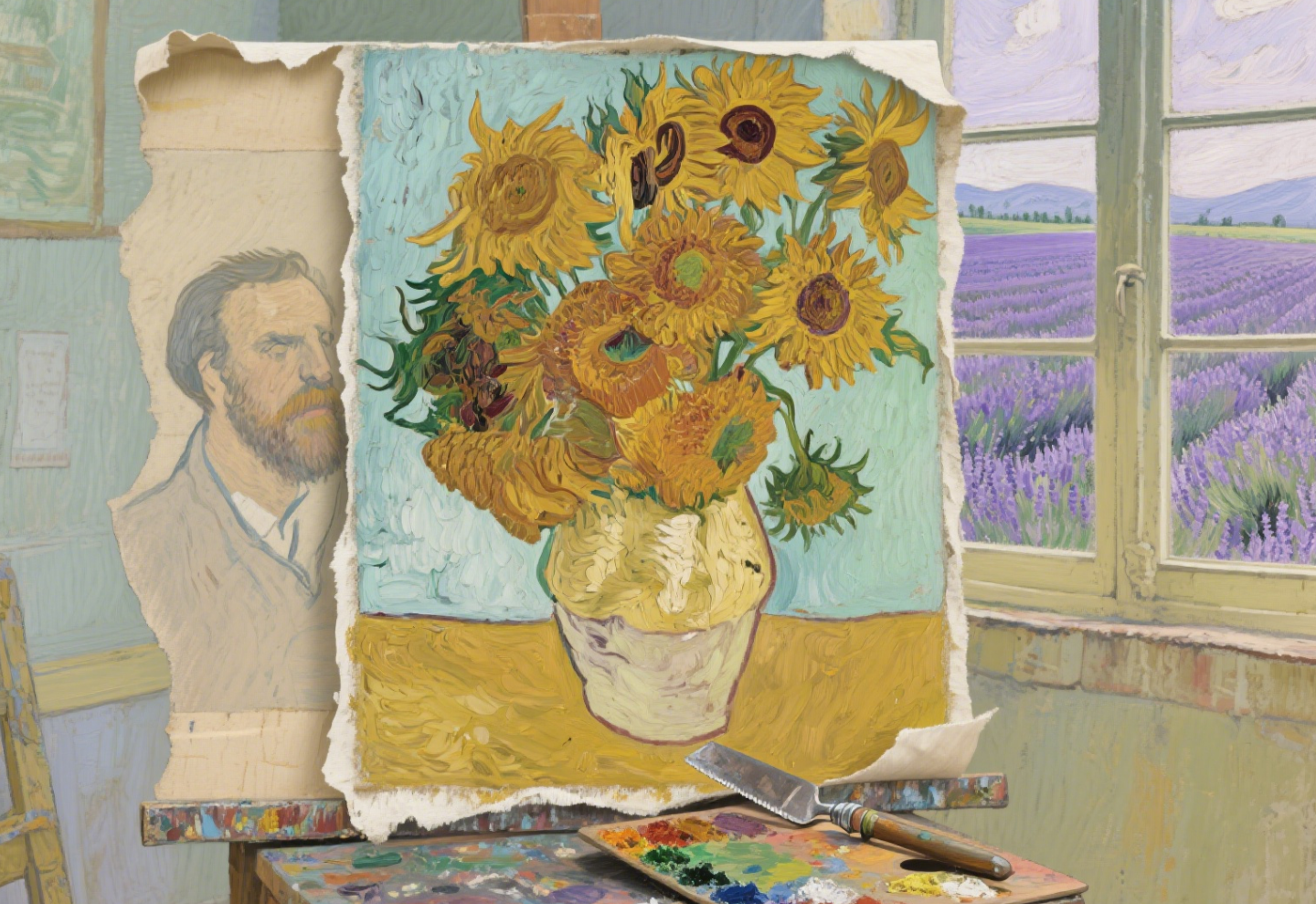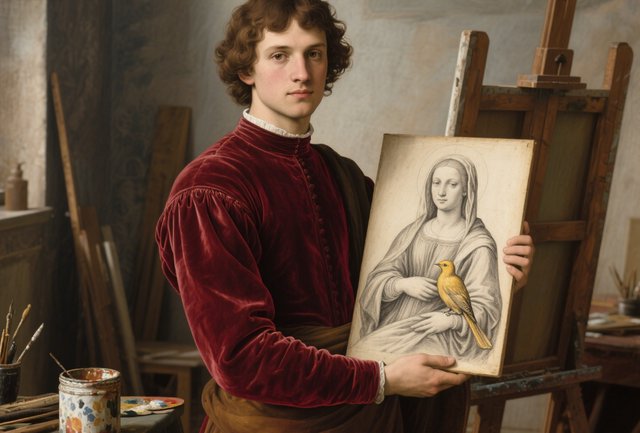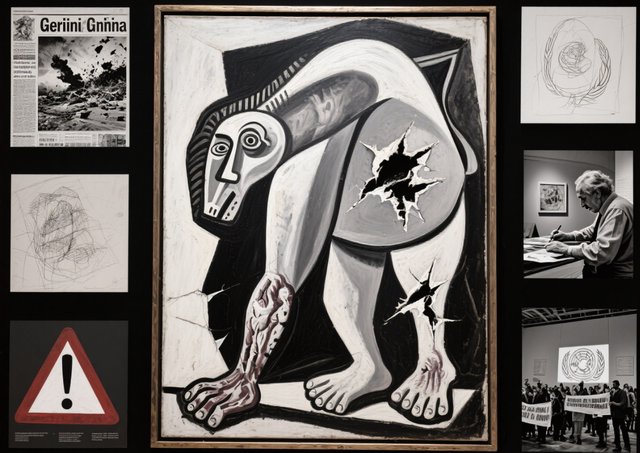10 Crazy Stories Behind Famous Paintings’ Canvases—You Won’t Believe

Behind every world-famous Oil painting is a silent star: the canvas (or carrier) holding it together. These surfaces—linen, wood, even cardboard—aren’t just “backdrops.” They tell stories of Artists’ struggles, experiments, and even secrets. At theArtPaint, we’re peeling back the layers to reveal 10 surprising tales of the canvases behind iconic masterpieces.
1. Mona Lisa by Leonardo da Vinci: Not a Canvas at All
Leonardo’s Mona Lisa (1503–1519) doesn’t sit on cloth—it’s painted on a poplar wood panel. Why? Poplar is smooth, dense, and less likely to warp than canvas, perfect for his detailed “sfumato” blending.
But here’s the twist: poplar was cheap in Renaissance Italy. Leonardo, known for expensive experiments, chose it to keep the portrait affordable for his patron. Today, that humble wood panel is one of the most studied surfaces in art history, with scientists using X-rays to uncover hidden sketches beneath the paint.
2. The Starry Night by Vincent van Gogh: Linen’s Rough Charm
Van Gogh’s 1889 masterpiece uses linen canvas—a rough, textured fabric he loved for its “tooth” (grip for thick paint). Linen was pricier than cotton, but Van Gogh called it “the only cloth worthy of real color.”
His choice paid off: the linen’s texture amplifies his bold, swirling brushstrokes, making the night sky feel almost touchable. Experts at the MoMA later found the canvas was pre-primed with a pinkish layer, which peeks through in the painting’s lighter areas—adding an accidental warmth Van Gogh never noticed.
3. Sunflowers (Vase with Fifteen Sunflowers) by Vincent van Gogh: Reused Canvas, Hidden Past
Van Gogh’s 1888 Sunflowers hides a secret: it’s painted over an older work. X-rays reveal a half-finished portrait of a man beneath the yellow blooms. Why? Van Gogh was poor—reusing canvases saved money.
This “double life” makes the painting even more precious. It’s not just a bouquet; it’s a snapshot of his struggle. The original portrait’s ghostly outline (visible in certain lights) reminds us: great art often grows from necessity.
4. The Last Supper by Leonardo da Vinci: A Canvas Disaster
Leonardo’s 1495–1498 mural isn’t on canvas or wood—it’s on a dry plaster wall, using an experimental technique. He mixed tempura paint with oil, hoping to layer colors like he did on panels.
Bad move. The mixture didn’t bond to the wall, and by 1556, the painting was already flaking. By the 1700s, parts were unrecognizable. Today, it’s a lesson: even geniuses mess up canvas choices. Conservators now spend millions stabilizing what’s left.
5. The Night Watch by Rembrandt: Too Big for Its Home
Rembrandt’s 1642 masterpiece was painted on a massive linen canvas (11.9 x 14.3 ft). But when it was moved to Amsterdam’s Town Hall in 1715, the canvas was cut down to fit a smaller wall—lopping off 2 feet from the sides and top.
Gone forever: parts of the militia group and a decorative arch. The trimmed canvas now hangs in the Rijksmuseum, a reminder: a painting’s size isn’t just artistic—it’s tied to where it lives.
6. The Scream by Edvard Munch: Cardboard on a Budget
Munch’s 1893 The Scream (the painted version) uses cardboard, not canvas. He loved cardboard for quick sketches, but here, he turned it into a masterpiece. Why? It was cheap, portable, and let him work fast while his emotions were raw.
The cardboard’s porous surface soaked up paint, giving the sky its blurry, blood-red hue. Today, it’s one of the most valuable “non-canvas” artworks ever—proof that great art doesn’t need fancy materials.
7. Guernica by Pablo Picasso: A Traveling Canvas
Picasso’s 1937 anti-war mural was painted on heavy linen canvas, chosen specifically for durability. Why? He wanted it to tour the world, spreading its message against fascism.
And tour it did: from Paris to New York to Buenos Aires, the canvas endured 20+ years of shipping, humidity, and crowds. Its toughness made it a global symbol—proving a canvas’s job isn’t just to hold paint, but to carry a cause.
8. Water Lilies Series by Claude Monet: Giant Canvases, Tiny Studio
Monet’s 1899–1926 Water Lilies include some of the largest oil paintings ever: 6.5 ft tall and 42 ft wide. He used linen canvas, stretched over wooden frames, but here’s the kicker: he painted them in a small, windowless studio near his pond.
He’d roll the huge canvases up to move them, then unroll to add brushstrokes. The canvas’s flexibility let him work in chunks—turning a limitation into a way to capture light’s ever-changing dance.
9. The Creation of Adam by Michelangelo: Sistine Chapel’s “Canvas”
Michelangelo’s 1508–1512 fresco isn’t on canvas—it’s painted directly on wet plaster (buon fresco). The plaster dries quickly, so he had to work fast, finishing small sections each day.
This “canvas” forced him to think in pieces, but it also made the art part of the wall—permanent, if fragile. Centuries later, the plaster’s cracks tell their own story: of time, humidity, and the struggle to preserve genius.
10. Wheatfield with Crows by Vincent van Gogh: Coarse Linen, Raw Emotion
Van Gogh’s final painting (1890) uses coarse, unbleached linen—rougher than his usual choice. Its texture makes the wheat stalks look jagged, the sky heavy. It’s as if the canvas itself is tense, mirroring his mood.
Experts think he chose it for speed: the rough surface grabs paint quickly, letting him work without overthinking. That urgency turned a simple canvas into a haunting farewell.
How to Care for Different Canvas Types
Want your oil painting to last? Match care to its carrier:
Linen Canvas: Avoid direct sunlight (fades fibers) and high humidity (causes mold). Dust with a soft brush monthly.
Wood Panels: Keep away from radiators (dries wood, causing cracks). Use a dehumidifier in damp rooms.
Cardboard: Frame with acid-free mats to prevent yellowing. Never hang in bathrooms—moisture ruins it.
| Canvas Type | Material | Pros | Cons | Iconic Example |
|---|---|---|---|---|
| Linen | Flax fibers | Durable, textured, long-lasting | Expensive, wrinkles if wet | The Starry Night |
| Wood Panel | Poplar, oak | Smooth, stable, no stretching | Heavy, prone to warping | Mona Lisa |
| Cardboard | Paper pulp | Cheap, portable, quick-drying | Fragile, fades fast | The Scream |
| Plaster | Wet plaster | Merges with wall, permanent | Cracks easily, hard to repair | The Creation of Adam |
Canvases are more than backgrounds—they’re partners in art. They carry secrets, struggles, and the marks of time. At theArtPaint, we know that to truly love a painting, you need to love its canvas too.
Ready to learn more? Explore our guide to choosing the perfect canvas for your own oil painting, or dive into how conservators save these fragile carriers.
theArtPaint.com—where every canvas has a story.




